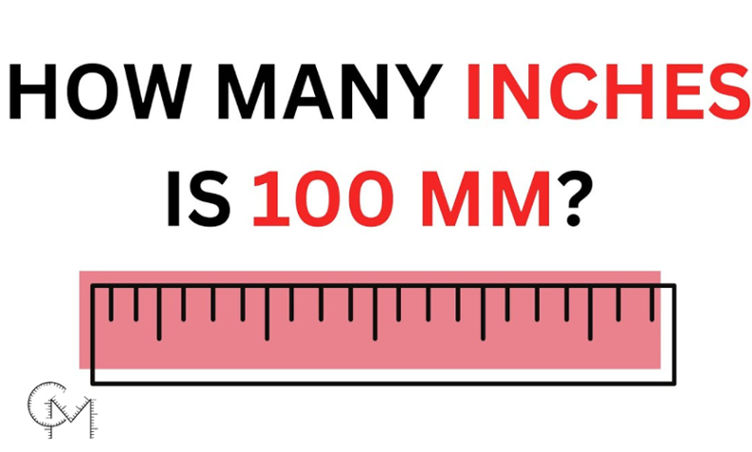
Converting millimeters to inches is essential for various tasks, from DIY projects to shopping for international products.
When working with measurements, especially if you’re handling dimensions from different systems, converting units accurately is crucial. If you’ve ever wondered, “How many inches are equal to 100 mm?” this article will help you understand the conversion process and provide practical examples. Whether you’re engaged in a DIY project, shopping online, or working in a technical field, knowing how to convert millimeters to inches is a valuable skill.
Understanding the Units
Before diving into the conversion, let’s briefly explore what millimeters and inches are:
Millimeters (mm): This is a unit of length in the metric system. One millimeter is one-thousandth of a meter. It is commonly used around the world for precise measurements, especially in scientific and engineering contexts.
Inches (in): This is a unit of length in the imperial system, primarily used in the United States and a few other countries. One inch equals 1/12th of a foot and is used for measuring a variety of objects, from furniture to fabric.
Conversion Formula
To convert millimeters to inches, you need to use a specific conversion factor. The relationship between millimeters and inches is defined as follows:
1 inch = 25.4 millimeters
To find out how many inches are in 100 millimeters, you can use this formula:
Inches = Millimeters ÷ 25.4
Applying this formula to convert 100 mm to inches:
Start with the measurement: 100 mm
Divide by the conversion factor: 100 ÷ 25.4
Calculate: 100 ÷ 25.4 = 3.937 inches
Therefore, 100 millimeters is approximately equal to 3.937 inches.
Practical Examples and Uses
Understanding this conversion can be helpful in various scenarios. Here are a few practical examples:
1. Home Improvement Projects
If you’re working on a DIY project and you have materials listed in millimeters but your measuring tools are in inches, you’ll need to convert these measurements. For instance, if a tile is 100 mm wide and you need to know its width in inches, converting it to approximately 3.94 inches helps you ensure it fits perfectly in the space you’re working with.
2. Shopping for International Products
When purchasing products online from international sellers, dimensions might be listed in millimeters. For instance, if you’re buying a new piece of furniture and the dimensions are given as 100 mm, converting this to inches (3.94 inches) can help you visualize its size better and ensure it meets your needs.
3. Technical and Engineering Applications
In technical fields, precise measurements are crucial. Engineers and designers often need to convert measurements between metric and imperial units to ensure that parts and components fit together correctly. Knowing that 100 mm equals about 3.94 inches can be important when interpreting blueprints or specifications that use different units.
Using an Online Converter
For quick and hassle-free conversions, you can use online tools. Simply enter the millimeter value (100 mm) into the converter, and it will instantly provide the equivalent in inches. This is particularly useful if you need to convert multiple measurements quickly or if you’re not comfortable with manual calculations.
Conversion Chart
Here’s a quick reference chart for common millimeter-to-inch conversions:
Millimeters (mm) Inches (in)
1 mm 0.03937 in
10 mm 0.3937 in
50 mm 1.9685 in
100 mm 3.937 in
200 mm 7.874 in
500 mm 19.685 in
1000 mm 39.37 in
This chart can be handy for quick look-ups and everyday use.
Conclusion
Converting 100 millimeters to inches is a straightforward process when you know the correct formula. By dividing the number of millimeters by 25.4, you get the measurement in inches. In this case, 100 mm is approximately equal to 3.937 inches. Whether you’re working on home projects, shopping for products, or handling technical specifications, this knowledge helps you make accurate and informed decisions.
© 2024 Crivva - Business Promotion. All rights reserved.